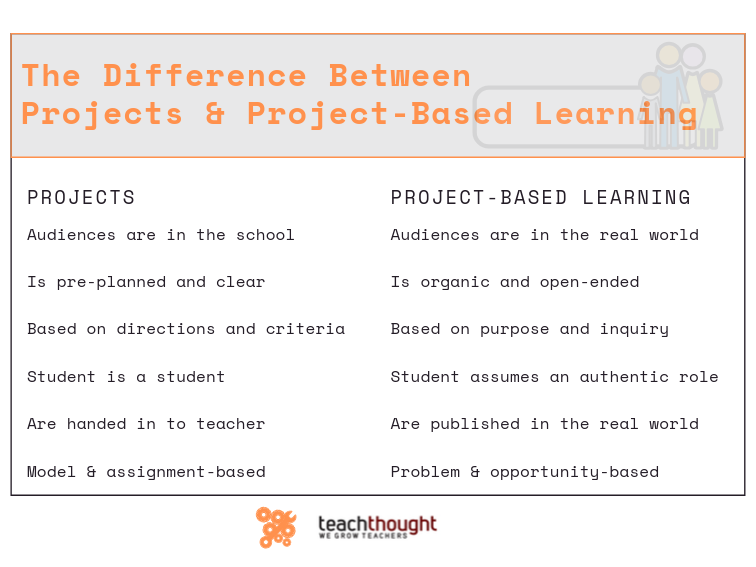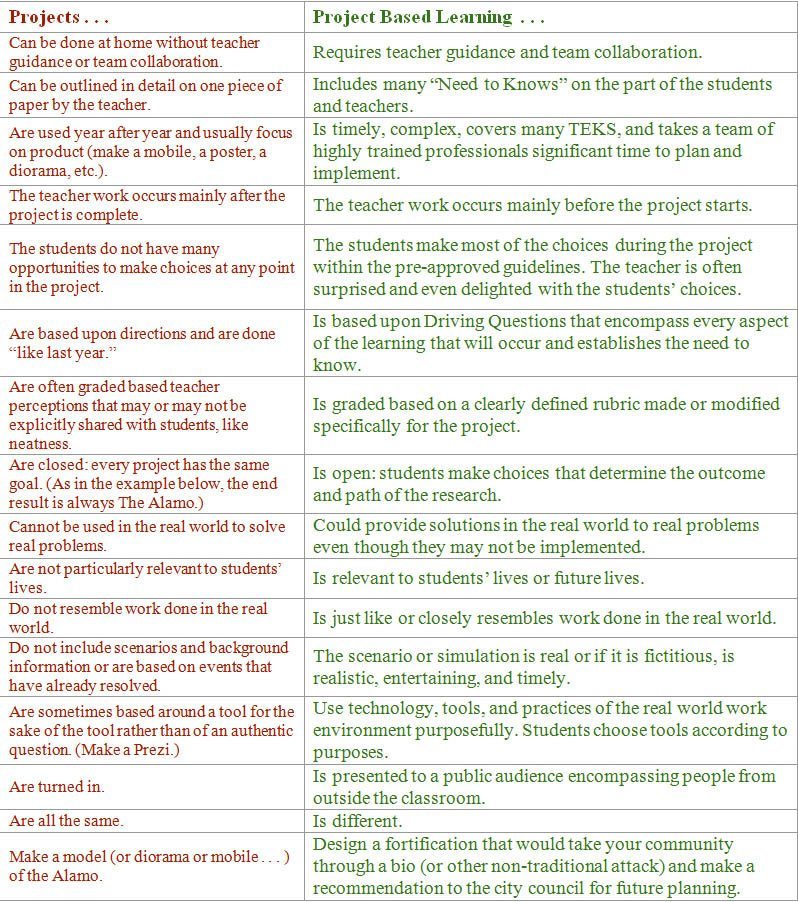
What Is The Difference Between Projects And PBL?
by TeachThought Staff
Projects in the classroom are as old as the classroom itself.
‘Projects’ can represent a range of tasks that can be done at home or in the classroom, by parents or groups of students, quickly or over time. While project-based learning (PBL) also features projects, in PBL the focus is more on the process of learning and learner-peer-content interaction than the end-product itself.
While some examples of project-based learning might be helpful, it’s also useful to understand the big picture: While PBL is a different approach to learning, it’s not hugely different from traditional learning from a broad enough perspective. The learning process is simply personalized in a progressive PBL environment by students asking important questions, and making changes to products and ideas based on individual and collective response to those questions. In PBL, the projects only serve as an infrastructure to allow users to play, experiment, use simulations, address authentic issues, and work with relevant peers and community members in pursuit of knowledge.
By design, PBL is learner-centered. Students don’t simply choose between two highly academic projects to complete by a given date, but instead, use the teacher’s experience to design and iterate products and projects–which often address issues or challenges that are important to them.
The chart by Amy Mayer at the bottom of this post is helpful to clarify many of the important differences between projects and PBL. Ultimately, the biggest difference is the process itself.
Projects
The audiences are generally in the school
Are more about the end-product and less about the learning and process
They are pre-planned and clear
They are based on directions and criteria
They can be done at home without teacher guidance or collaboration
They can be outlined in detail on one piece (or even two pieces) of paper by the teacher
In a project, the ‘teacher work’ mainly occurs after the work is complete
Are less open-ended and more uniform
Projects are ‘turned in’ rather than ‘published,’ presented, or otherwise managed on an ongoing basis (like a business, for example)
PBL
In PBL, the audience is generally outside the school
PBL includes ‘need to knows’ and progress checkpoints
Input from peers, teachers, community members, experts, and others can help guide and improve the project
The ‘teacher work’ is done mainly before and during the process itself
PBL Is often based on a driving question and ongoing inquiry, discovery, and iteration
PBL depends on background knowledge, learner choice, technology tools, support from others, and dozens of other factors that result in a process of learning that produces very different results

Image attribution flickr user josekevo; © Amy Mayer, @friEdTechnology, The Original WOW! Academy, www.friEdTechnology.com